#towaoc
Text
Eating to Extinction credits Bruce Pascoe as an Aboriginal writer and farmer for introducing him to Murnong. (Correct your errs, Dan Saladino)
In actuality, he is evidently white - as per his ancestry, ie. all four of his grandparents were English. Yet he goes so far in his claim to aboriginal identity that he wrote an award winning booking on indigenous history and practices and operates a huge farm and company selling indigenous produce that he refers to in said book.

If you want to learn more about indigenous food culture, ie. more sustainable and nutritious eating -- look to actually indigenous people. That requires some work, but here's one example: Karlos Baca, an Indigenous Foods Activist from the Southern Ute Nation
https://www.instagram.com/tasteofn8vcuisine/?hl=en

Karlos Baca, formerly a chef, and now a teacher says his students travel from places where there are more gas stations than grocery stores.
"'Here I'm teaching them how to survive the American food system.' Baca is on the front line of a food war, one being waged against indigenous people. The way he sees it, the first casualty is health. 'That's why we need to decolonise our diets,' he says."
"During the class, he took a handful of blue maize flour and mixed in some water, turning the grey-white powder into a deep purple porridge. To this, he added a pinch of burnt wood ash that made the colour of the maize more intense. With a small blade, he sliced tiny slivers from what looked like a gnarled and blackened piece of wood. 'I can tell you my life story through this one bowl,' Baca said, 'and this food can also show you what happened to my people.'"
#bruce pascoe#eating to extinction#australia#aboriginals#australia aboriginals#murnong#aboriginal writer#aboriginal farming#sustainability#rachel dolezal#dan saladino#karlos baca#southern ute#towaoc#colardo
98 notes
·
View notes
Text
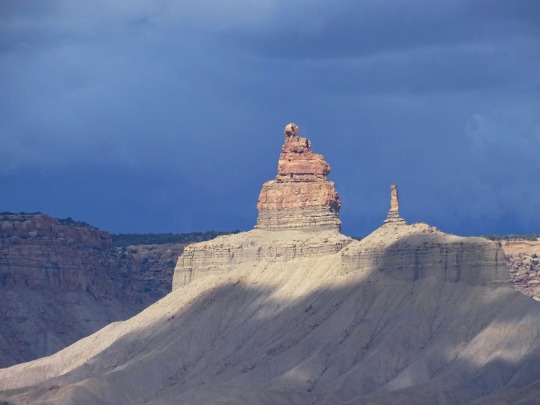


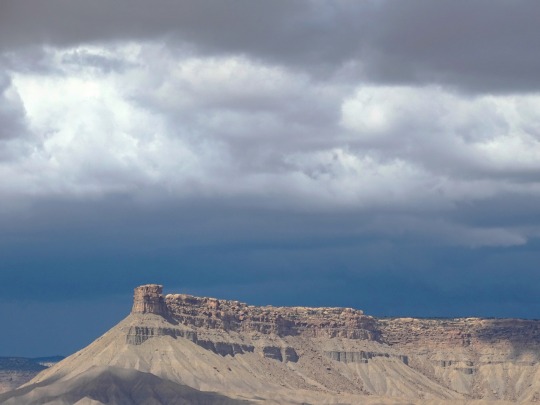
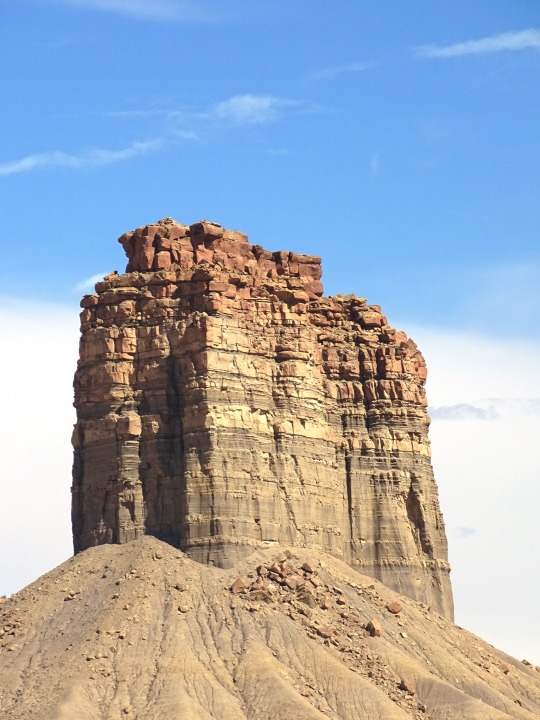

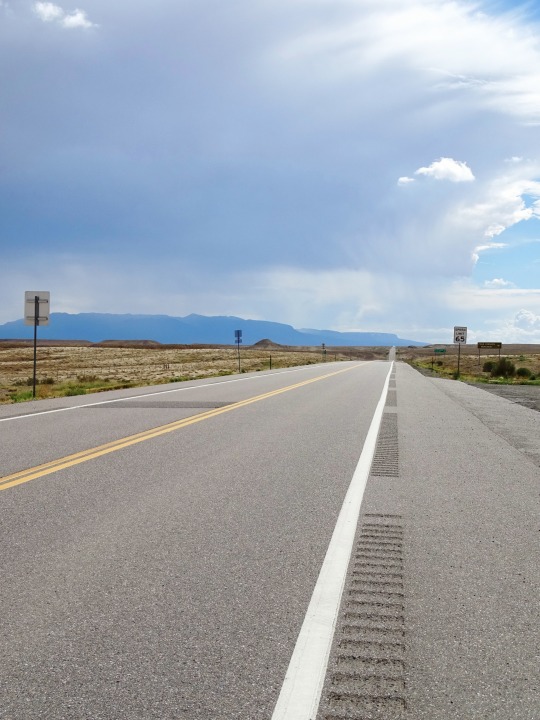


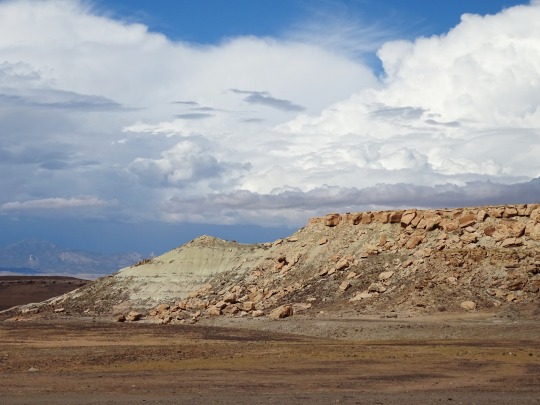
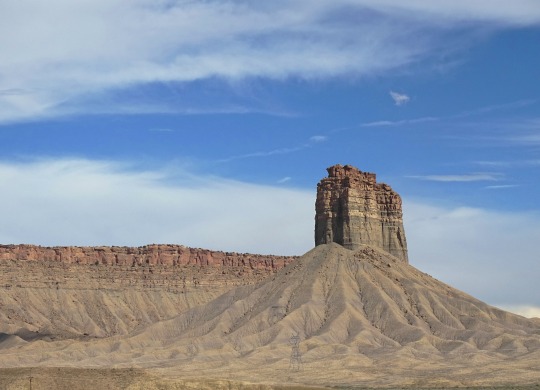
Montezuma County, CO
Montezuma County is a county located in the U.S. state of Colorado. As of the 2020 census, the population was 25,849. The county seat is Cortez.
Mesa Verde National Park, Canyons of the Ancients National Monument, Yucca House National Monument, and Hovenweep National Monument preserve hundreds of ancient Amerindian structures, including the famous cliff-dwellings, found in the county. Montezuma County is also home to most of the Ute Mountain Indian Reservation, home of the Weeminuche Band of the Ute Nation, known as the Ute Mountain Ute Tribe, with its headquarters at Towaoc.
Source: Wikipedia
#Chimney Rock#Kaan Paachihpi#Montezuma County#Highway 160#desert#travel#original photography#vacation#tourist attraction#landmark#landscape#clouds#light and shadow#USA#summer 2022#Southwestern USA#Mountain West Region#sand#rock formation#Colorado
16 notes
·
View notes
Text
"Taking my hotel with me"
I drive. A lot. It's my defacto mode of vacation, to get in my car and drive hundreds of miles. I do it fairly often, and I've spent my fair share of nights in the back of my car, my "rolling hotel".
So, where do I sleep?
I've spoken about my sleeping arrangements before, but given my god awful luck this trip, I want to use this tumblr post to bitch vaguely but also explain what makes "a good place to sleep".
(Please note I'm not saying this is the only way to travel and sleep in your car. Just my preferences.)
First thing to understand: no place is perfect. It's weighing your best options. Here are some things that I want in my sleeping area:
���️ 24 hour parking
✅️ Public bathrooms
✅️ Public showers
✅️ Semis or other cars around
✅️ Well lit
✅️ 24 hour staff around (store/gas station/etc)
✅️ One or more side with no adjacent parking
✅️ Low population but high vehicle traffic
✅️ Good data coverage
Here are some things that I do not want in my sleeping area:
❌️ High foot traffic or loiterers
❌️ No semi parking/semi pumps
❌️ In a highly populated area
❌️ No service
❌️ 'No Overnight Parking' signage
❌️ No other overnighters or even empty cars
Some places I've slept that I would say satisfy my preferences for sleeping, and I consider actually quite comfortable:
Love's Travel Stop, Dodge City, KS
Common Cents, Sheridan, WY
Ute Mountain Travel Plaza, Towaoc, CO
#the dumbest shit in the weirdest places#traveling#travel#road trip#driving#camping? i guess?#sleeping in my car
2 notes
·
View notes
Text
Any females located in Shiprock or Towaoc area hit me up and will send # wanna hangout with someone or if you know anyone DM 🥰wanna meet up with any females
0 notes
Photo

A message for kids. Cherrie works at the Federal Regulations Office for the Ute Tribe. She shared with us her message for all kids: Growing up is hard. But you need to remember that you are not what or where you came from, you have the power to change all of that to be who you want to be. You are the writer of your own book, make the story a good one. Cherrie realized the above for herself when she was 12, walking down a street at night and she felt so alone. She decided to change that. She now lives life to the fullest, and spends as much time as possible to help others. She realized life is what you make of it, so she made her life into an inspiring story. #messageforthekids #towaoc #colorado #travel #usa #ute #utetribe #livelifetothefullest #inspiration (at Towaoc, Colorado) https://www.instagram.com/p/B4SpKZQglba/?igshid=uakh41uxie94
1 note
·
View note
Text
Fred Begay (Clever Fox)
Dr. Fred Begay, PhD (1932-2013), also called Fred Young and Clever Fox was a nuclear physicist who worked for NASA and developed alternative energy sources. He was a Navajo/Ute man from Ute Mountain Indian Reservation in Colorado.

[Begay in a classroom]
Born in Towaoc where the Ute Mountain Indian Reservation was headquartered. He was taught by his parents, both Navajo healers, and learned Navajo and Ute as his native languages. His parents taught him their religious beliefs and the songs of the Blessingway ceremony. He didn't start speaking English until he was 10, when he began attending a Bureau of Indian Affairs school. This school was restrictive and racist, punishing him for speaking Navajo or Ute or reciting any traditional prayers. Because neither he nor his parents could advocate for him in English, the school forced him to learn to farm.
After turning 18, he enlisted in the Army and joined the Air Force. After, he returned to Colorado to help tend the family farm, but he did not stay very long.
Begay attended the University of New Mexico. His previous education being subpar, he took high school classes at night to keep us. He quickly got a bachelor's in math and science, a master's in physics, and a doctorate in nuclear physics. He joined the physics staff of the Los Alamos National Laboratory and joined two NASA-funded projects on space physics. He taught at Stanford University and the University of Maryland.
His field of research was thermonuclear fusion, especially plasma fusion. This is a potential source of clean energy but it is not yet efficient to overcome the amount of energy required to start the fusion process. One of his contributions to the field was the derivation of an electron temperature scaling law for laser-produced plasmas.

[Begay's photo for his election to the New York Academy of Sciences]
Begay spent his entire life dedicated to Navajo spiritualism and says that much of what physics teachers is mirrored in what he learned from his parents as a young child.
"It turns out many of the prayers and songs have built in lots of science, I was immersed in all that knowledge before I even got to the first grade. "
#long post#history#world history#native history#indigenous history#indigenous people#navajo#ute#navaho#fred begay#fred young#clever fox#navajo spiritualism#physics#science#science history#native american history#colorado#nasa#lasers
13 notes
·
View notes
Text
Ska, craft spirits, and Colorado's real drinking town
The hangover bell rings loud and clear in my head as I lift a 70 pound guitar cabinet into the back of a white 2000 Ford Econoline XL. Rain falls lightly. I am running on only a few slovenly hours of sleep but despite the pounding head, my mood is jovial. My band mates and I recount the night before over and over. In the world of ska music, there are few bands more respected than Hepcat, and few bands more infamous than Mephiskapheles, and we just shared the stage with both in one night. It was also the kick off to the second leg of our spring and summer run- this morning we hit the road out of Denver and head for Durango, Colorado, where we’ll spend a week in the studio and follow it up with two shows in the area including a performance at the legendary��Ska Brewing Company.
Alright.
Personally, I am excited for more than one reason. I went to school in Durango, but it’s been six years since I’ve lived there and from what I can tell, the drinking scene has only gotten better. A new craft distillery just opened up, and the number of breweries has jumped from 4 to 6 (All this in a town of 17,000. Fort Collins gets the glory, but at over 150,000 residents, are their 14 breweries and 3 distilleries that impressive? Which is the real drinking town?)
I contemplate this and other pressing issues to pass the time on a 7 hour haul over the Rocky Mountains. As we climb in elevation, my mood levels off. It always does when passing time in the van. Whether I am headed somewhere new or somewhere I’ve been many times, as long as it’s light outside touring has always had a bit of a weird vibe to me. The late nights, the shows, the people, the free drink tickets - that is what it’s all about and what makes it worth it. The rush of playing a good show is matched by no drug or other experience I’ve ever had. But during the day, driving through the middle of nowhere to the next town while getting further and further away from your personal life back home, the anxiety creeps in.
Maybe it’s because I’ve never been in a band at a level where touring was our income. I’ve always had to hurry back home after each run and get to work in order to keep the bills paid. Right now, it’s about 9:30 on Monday morning. Everyone I know (except the three guys sitting here with me) is at work, or walking the dog, or heading to the bank, something normal.
Don’t get me wrong, there is certainly a level of awesome to all this. I’m never going to be a ‘company man.’ I knew that by the time I hit high school. I take a lot of pride in what I do for a living and for a hobby. But the older I get, the harder I find it to relate the stories of the road and the stories of the pen and the stories of so many nights passed in rock clubs to people who are my age but haven’t had a night out in months. The word ‘baby’ means something entirely different to them.
As Vonnegut would say - So it goes. We pull into town just in time for happy hour but unfortunately the liquor store will have to suffice for tonight; we’ve got to get to the studio. Tomorrow I will have the opportunity to experience some of the actual culture of this town I’ve missed so much.
Tuesday morning I am walking down Main Avenue bright and early in a leisurely search for a cup of coffee and a paper. Part of me feels like a Texan, stopping to gaze into each store window as I pass by and then actually purchasing, after looking around to make sure no one I know is in sight then ducking quickly into the storefront, a “Durango” t-shirt. I’ll have to bury this down in my backpack so my bandmates never see it. I justify the window shopping and eventual purchase as a mere way to pass some time before my scheduled meeting with some real locals, the owners of Durango Craft Spirits, at 10 o’clock.
I walk into the tasting room to meet owners Michael and Amy McCardell. Immediately I can tell that the duo lives by their motto and are ‘Inspired by the true spirit of Durango’ - It is only 10 am but the room is full of bluegrass music and the McCardell’s beckoning call for a drink. Michael handles the distilling of what is currently their sole offering - Soiled Dove Vodka, made from a mash of 60% native grown, non-GMO white corn they get directly from the Ute Mountain Tribe of Ute in Towaoc, Colorado (just a little over an hour from Durango). His soft voice, with a bit of a country tinge, makes even a short sentence sound well-rehearsed and wise. Perfect for telling stories, and I’m guessing he has a lot of them.
Lucky for me, Michael is not at all shy about telling the story of Durango Craft Spirits, his pride and joy.
It is, I learn quickly, Durango’s first post-prohibition, grain-to-glass distillery. “We’ve got a couple friends over at Ska, Dave (Thibodeau) and Bill (Graham), that opened Peach Street Distillery, in Grand Junction) years ago and one day I met the old distiller and Bill brought in one of their first bottles of gin, along with a bottle of Bombay Sapphire,” Michael says. “It was just unbelievably so much better. That first opened my eyes to craft distilling.”
This was over ten years ago, and until that day Michael had no plans at all of going into the distilling business. “A couple years later, I’m hiking around a piece of property up north with the county assessor, and he said ‘I gotta tell you this story. There’s a buddy of mine who thought he found some ancient Anasazi ruins on his property and he wanted me to come check them out. They hiked up there on a cliff to an Anasazi looking wall and there was an old still sitting back there.’”
He decided to do some research and try to figure out what kind of distilling was done in the area. “I started reading a few books about distilling in the area, and there was quite a bit done,” Michael says. “Especially turn of the last century when the silver market took a crash. A lot of the miners took to cooking booze in the mines.”
With his interest piqued, Michael attended three distilling schools and landed himself an internship at Wood’s High Mountain Distillery in Salida, CO, with the intention of opening his own show in Durango once he learned about the operational side. Both Michael and Amy had spent years in the local hospitality industry managing hotels and a golf club.
As their current jobs came to end due to sell offs, the decision was made to go full-steam with the distillery concept. Step one, securing a location. Where They landed right on the corner of 11th and Main, in the heart of downtown, and opened in January of this year.
Their setup is pretty simple - tasting room in the front, still setup and work area in the back (visible to guests), and office off to the side. Nice and cozy. “We go grain to glass right in the building with all regional grains,” Michael says. “We’re real proud to mash, distill, and bottle right in house.” I had been sold on their concept already, but at this point I could not continue the interview without trying some of their product.
Amy, generally in charge of the tasting room and PR, hands me a pour from behind the bar. I stir, smell, and sip. Then I gasp.
I am not a vodka drinker. My taste for the stuff was ruined by too much Smirnoff as a teenager. But this morning I am happy to make an exception. This stuff is good. Smooth, one of those spirits that you know would be perfect in a cocktail but it almost seems like a sin to dilute it, like a fine scotch. Until you realize that a vodka of such high quality could finally allow you to drink those plastic-bottle vodka infused party concoctions you swore off in your mid-twenties because you can’t stand the headaches any more, minus the headache. “I use a pretty strange recipe for the vodka compared to other distilleries, and it gives it a pretty unique flavor.” That, I agree, is easy to notice.
“The product is tied to Durango’s history,” Michael informs me as empty my glass. “Soiled doves being a Victorian term for the prostitutes of the town. They operated into the 1960s in Durango and were fined heavily, with the fines helping to cover the cost of the schools, the police department, and the fire department.”
The McCardells pay homage to these lovely financiers on the back of their bottle. The cocktails served in the tasting room are also related to the town’s history, an effort that has most certainly allowed the curious tourist to feel more accomplished in his imbibing. The distillery looks to release an unaged whiskey this fall, with barreling scheduled to begin this month. The vodka is currently only sold within 150 miles of Durango. “We are being (probably) too cautious about our growth,” Michael says. They do, however, plan to expand further across Colorado. Not bad for a true mom-and-pop and operation.
I like to think that my band is a mom-and-pop operation. I guess it would be a quadruple-pop operation. Like Michael and Amy, we have grown our small company from nothing into nothing less than an amazing life experience, with no real guidance other learned experience. We have made plenty of mistakes over the last eight years but have slowly made progress come from each of them. We’ve dealt with marriages, jobs, mortgages, kids, operational disagreements, and an old van catching on fire on the road, and as life has happened, we have found a way to happen with it. Back in the early days, circa 2007-2010, I put all of my eggs in that basket. I was willing to work crappy kitchen jobs and live in dilapidated apartments so that I would in turn have the flexibility to leave town when I needed to and be able to keep my financial overhead at a bare minimum in order to play music multiple nights a week. I cared about nothing other than making the band succeed. I lost relationships and friends.
The other guys, at least the two I started the group with, did the same. And then, in the fall of 2010, we crashed and burned hard. So hard, in fact, that over the next two years we did next to nothing with the group. We had no money, our leases were up, and we had nowhere left to go. For a while, we went our separate ways. Our biggest lesson, and one of the most important things I have ever gotten out of life, is that you have to have options - you have to have more than one card to play. As we’ve grown up since then, we have found ways to have other priorities in life while still being able to come back and execute with the band when it’s time.
While the band was on ‘unofficial hiatus’, I filled the musical craving in another group, but I was also able to take the experiences I had with the band, mix them with my college degree, and create some kind of shit show career path based on music business and journalism. Five years later I feel I can see it blossoming. To me, the craft lifestyle embodies that same spirit - live life, take what you’ve got, mix in a heavy dose of passion, and throw it to wind. It takes awhile, but when it finally comes full circle, it tastes so damn good.
1 note
·
View note
Text
'The other Mesa Verde': Colorado's lesser-known but no less wondrous tribal park - Sat, 02 Oct 2021 PST
TOWAOC, Colo. – Some say the first people of the canyons never left. Not really. You don’t see them, the Ancestral Puebloans who made homes in the cliffs some 1,400 years ago. “But you can feel them,” says the woman at the ramshackle gas station-turned-visitor center here.
'The other Mesa Verde': Colorado's lesser-known but no less wondrous tribal park - Sat, 02 Oct 2021 PST
0 notes
Text
“When people do things to you when you’re growing up, it affects you spiritually, physically, mentally and emotionally,” said Russell Box Sr., a member of the Southern Ute tribe who was 6 when he was sent to a boarding school in southwestern Colorado.“We couldn’t speak our language, we couldn’t sing our prayer songs,” he said. “To this day, maybe that’s why I can’t sing.”The discovery of the bodies in Canada led Secretary of the Interior Deb Haaland, the first Native American to head the department that once ran the boarding schools in the United States — and herself the granddaughter of people forced to attend them — to announce that the government would search the grounds of former facilities to identify the remains of children.
That many children died in the schools on this side of the border is not in question. Just last week, nine Lakota children who perished at the federal boarding school in Carlisle, Pa., were disinterred and buried in buffalo robes in a ceremony on a tribal reservation in South Dakota.
Many of the deaths of former students have been recorded in federal archives and newspaper death notices. Based on what those records indicate, the search for bodies of other students is already underway at two former schools in Colorado: Grand Junction Indian School in western Colorado, which closed in 1911, and the Fort Lewis Indian School, which closed in 1910 and reopened near Durango as Fort Lewis College.
Throughout the decades that they were in existence, the schools were seen as both a cheaper and a more expedient way of dealing with the “Indian problem.”
Carl Schurz, the secretary of the interior in the late 1800s, argued that it cost close to $1 million to kill a Native American in warfare, versus just $1,200 to give his child eight years of schooling, according to the account of the historian David Wallace Adams in “Education for Extinction.” “A great general has said that the only good Indian is a dead one,” Capt. Richard H. Pratt, the founder of one of the first boarding schools, wrote in 1892. “In a sense I agree with the sentiment, but only in this: That all the Indian there is in the race should be dead. Kill the Indian in him and save the man.”
[...] His grandfather taught him how to carve a flute out of the branch of a cedar. When the boy brought the flute to school, his teacher smashed it and threw it in the trash.
He grasped even then how special the cedar flute and his native music were. “That’s what God is. God speaks through air,” he said, of the music his grandfather taught him.
He said the lesson was clear, both in the need to comply and the need to resist.
“I had to keep quiet. There’s plenty where it came from. Tree’s not going to give up,” he said of the cedar. “I’m not going to give up.”
Decades later, Mr. Lopez has returned to the flute. He carves them and records in a homemade studio, set up in his home on the Ute Mountain Ute reservation in Towaoc, Colo.
[...] From her first day in the dormitory, she never again practiced the morning prayer to the four directions.
Unable to do it in physical form, she learned instead to do it internally: “I did it in my heart,” she said.
In her old age, she now makes jewelry using traditional elements, like “ghost beads” made from the dried berries of the juniper tree. When she started selling online, she chose the domain: www.dzabahe.com.
It is her birth name, the one that was taken from her at the boarding school, the one whose Navajo meaning endured: “woman who fights back.”
- Lost Lives, Lost Culture: The Forgotten History of Indigenous Boarding Schools
0 notes
Text
Navajo Hopi Honor Riders: Riding for All Fallen Warriors
Navajo Hopi Honor Riders: Riding for All Fallen Warriors
Ute tribal members welcome Navajo Hopi Honor Riders at Towaoc, CO on May 19, 2018. (Photo by Geri Hongeva-Camarillo)
Published May 27, 2018
WINDOW ROCK, Ariz. – What kind of people save their vacation hours annually, so they can use it to visit families who have lost their loved one while serving their country? The answer is, the Navajo Hopi Honor Riders.
Bikers can be misunderstood to be…
View On WordPress
4 notes
·
View notes
Photo

Towaoc, Colorado - Colorado has mother-nature crafting her scenery too #RunAwayBill #DUSA2020 #rabScenery #rabColorado #Colorado #rabLifeInQuarantine 08.25.20 (at Towaoc, Colorado) https://www.instagram.com/p/CEW-IALhoVV/?igshid=1ijjewbwzd438
0 notes
Text
Montezuma County Colorado Brand Inspectors-

Montezuma County Brand Inspectors are Joe Stevenson and Jonathan Patcheck.
These Great Guys Cover Cortez, Mancos, Dolores, Lewis, Towaoc, and La Plata County
and Everything in between.
These Guys Cover the Greater SW Colorado Region

Read the full article
0 notes
Photo

View, possibly Ute Mountain, near Towaoc, Motezuma County, Colorado, of Native American (Ute) men on horseback next to a tepee - Poley - 1908
39 notes
·
View notes
Text
Ute Mountain Hombre de Ute sentenciado a más de 23 años en prisión federal por dos crímenes violentos USAO-CO
Ute Mountain Hombre de Ute sentenciado a más de 23 años en prisión federal por dos crímenes violentos USAO-CO
DURANGO – El fiscal de los Estados Unidos Jason R. Dunn anunció que Wambli Mills, de 23 años de edad, de Towaoc, Colorado, fue sentenciado por el juez de la corte de distrito de los Estados Unidos Robert E. Blackburn por condenas en dos casos separados, para servir, combinados, durante 23 años (278 meses) en prisión federal, seguido de 7 años en libertad supervisada. Mills apareció en la…
View On WordPress
0 notes
Text
Interior Awards $17.68 Million Contract for Dam Modification in Utah to Tribal Company
Interior Awards $17.68 Million Contract for Dam Modification in Utah to Tribal Company
Steinaker Dam Published April 19, 2018 Award Shows Commitment to Infrastructure Improvement, Tribal Economy SALT LAKE CITY – The Department of the Interior’s Bureau of Reclamation today awarded a $17.68-million contract to Weeminuche Construction Authority of Towaoc, Colorado, which is 100 percent owned by the Ute Mountain Ute Tribe, for modification work at Steinaker Dam near Vernal, Utah. “This…
View On WordPress
8 notes
·
View notes
Text
Colorado News: Habitual Domestic Violence Offender, Bryan Ace Ponzo Sentenced To Federal Prison For Assault
Colorado News: Habitual Domestic Violence Offender, Bryan Ace Ponzo Sentenced To Federal Prison For Assault
Victim was defendant’s wife
DURANGO, Co. – Bryan Ace Ponzo, age 36, from the Ute Mountain Ute Indian Reservation surrounding Towaoc, was recently sentenced to serve 129 months in federal prison by Senior U.S. District Court Judge Robert E. Blackburnfor assault with a dangerous weapon, U.S. Attorney Bob Troyer, FBI Denver Division Special Agent in Charge Calvin Shivers and the U.S. Bureau of…
View On WordPress
#Bob Troyer#Bryan Ace Ponzo#colorado news#Department of Justice#DOJ#Domestic Violence#federal prison#Habitual Domestic Violence#Jason St. Julien#Jeffrey Graves#Robert E. Blackburn#TodayNews
0 notes